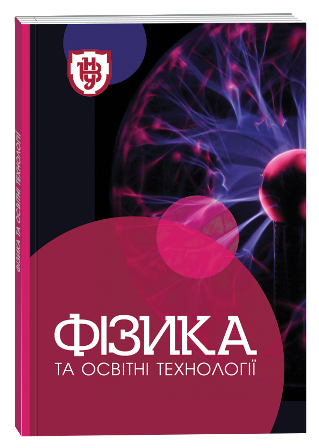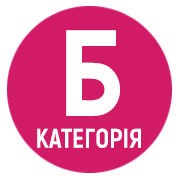ЛЮМІНЕСЦЕНТНІ ВЛАСТИВОСТІ СТЕКОЛ Ag2S-GeS2 ТА Ag2S-GeS2-Sb2S3 ЛЕГОВАНИХ ЕРБІЄМ ТА НЕОДИМІЄМ
DOI:
https://doi.org/10.32782/pet-2023-4-4Ключові слова:
халькогенідне скло, фотолюмінесценція, ербій, неодимій, збуджений стан, релаксаціяАнотація
Халькогенідні стекла леговані рідкісноземельними металами володіють унікальними властивостями. Їх використовують як світловипромінюючі середовища у лазерній техніці, перемикачі, оптичні сенсори, для конструювання далекомірів у військовій техніці, моніторингу забруднення повітря тощо. Сульфуровмісні стекла, що досліджені в статті, характеризуються прозорістю у видимій ділянці спектра, а також ближньому та середньому спектральному діапазоні. Увівши в такі широкозонні напівпровідники домішки рідкісноземельних металів, можна отримати матеріали із заданими оптичними властивостями, зокрема із високим квантовим виходом випромінювання. У представленій роботі подано компонентний склад зразків, у матрицю яких можна було ввести 2% Nd2S3 та (1-4)% Er2S3. Розчин-розплавним методом синтезовано стекла Ag2S-GeS2-Nd2S3-Er2S3 та Ag2S-GeS2-Sb2S3-Nd2S3-Er2S3. При збудженні зразків за допомогою лазера з енергією 1,54 еВ зафіксовано смуги фотолюмінесценції у ближньому інфрачервоному діапазоні спектра. Максимуми випромінювання 1,16 та 0,92 еВ відповідають переходам 4F3/2 → 4I11/2 та 4F3/2 → 4I13/2 в f-оболонці іонів Nd3+. Фотолюмінесценцію, яку пов’язуємо з іонами ербію, не зафіксовано. Положення та форма максимумів не змінюється при зміні концентрації рідкісноземельних металів. Збільшення вмісту ербію призводить до зменшення інтенсивності максимумів випромінювання. Цей ефект пов’язуємо із процесами обміну енергією між іонами Nd3+ та Er3+ при збільшенні концентрації останнього. На основі діаграми енергетичних рівнів в іонах неодимію обговорюється механізм збудження та випромінювання в іонах Nd3+. Виникнення інтенсивних смуг фотолюмінесценції в стеклах систем Ag2S-GeS2 та Ag2S-GeS2-Sb2S3 легованих ербієм та неодимієм може бути використано для конструювання лазерів у близькому інфрачервоному діапазоні спектра.
Посилання
Кумар К. Сильне синє випромінювання іонів Pr3+ через процес передачі енергії від Nd3+ до Pr3+ через Yb3+ у телуритовому склі /К. Кумар, С.Б. Рай, А. Рай // Спектрохім Акта A. – 2008 – № 71(2). – С. 508–512.
Нурхафіза Х. Er3+:Nd3+залежні від концентрації спектральні особливості аморфного середовища літій-ніобат-телурит/ Х. Нурхафіза, М.С. Рохані, С.К. Гошал // Журнал некристалічних твердих речовин. – 2016. – № 443. – С. 23–32.
Кітик І. В. Особливості NIR та видимої люмінесценції легованого ербієм Ga2S3–La2S3./ І. В. Кітик, В. В. Галян, В.О. Юхимчук, В.В. Стрельчук, І.А. Іващенко, Я. Жидачевський та інші // Журнал некристалічних твердих речовин. – 2018. – Вип. 498. – С. 380–385.
Хагерл З. Спектри люмінесценції та оптичні властивості стекол TeO2-WO3-Li2O, легованих рідкоземельними іонами Nd, Sm та Er/ З. Хагерл, Р. Ель-Маллавані, А. Булу// Фізика Б – 2011. – № 406. – С. 972–980.
Ель Наггар А.М. Дослідження нелінійно-оптичних властивостей скла Ga2S3–La2S3 для оптоелектронних застосувань / А.М. Ель Наггар, А.А. Альбассам, Г. Лакшмінараяна, В.В. Хальян В.В, Іващенко І.А., Кевшин А.Г.//Фізика і хімія скла. – 2019 – № 45. – С. 467–471.
Березнюк, О. Склоутворення в квазіпотрійних системах AІ 2 S–ВIVS2–СV 2 S3 (АI–Cu, Ag; ВIV–Ge, Sn, СV–As, Sb) / О. Березнюк, І. Петрусь, О. Смітюх, І. Олексеюк.// Проблеми хімії та сталого розвитку – 2021. – № 4. – С. 3–10.
Галян В.В. Синтез та понижувальна фотолюмінесценція легованих ербієм халькогологенідних стекол систем AgCl(I)–Ga2S3–La2S3 / В.В. Галян, В.О. Юхимчук, І.А. Іващенко, В.С. Козак, П.В. Тищенко, І.Д. Олексеюк //Прикладна оптика – 2021. – № 60,. – С. 5285–5290.
Чиллсі Е.Ф. Er3+–Tm3+co-leged телуритові волокна для широкосмугового оптичного волоконного підсилювача навколо діапазону 1550 нм, / Е. Ф. Чиллсі, Е. Родрігес, А. А. Р. Невес, В.К. Морейра, К.Л. Цезар, Л.Ц. Барбоза //Технологія оптичного волокна. – 2006. – С. 185-195.
Коугія К. Фотолюмінесценція в стеклах Ge–Ga–Se, легованих Er / К. Коугія, М. Мунзар, Д. Тончев, Ч. Дж. Хауген, Р.Г. Декорбі, Дж.Н. МакМаллін та інші// Журнал люмінесценції – 2005. – С. 92-96








